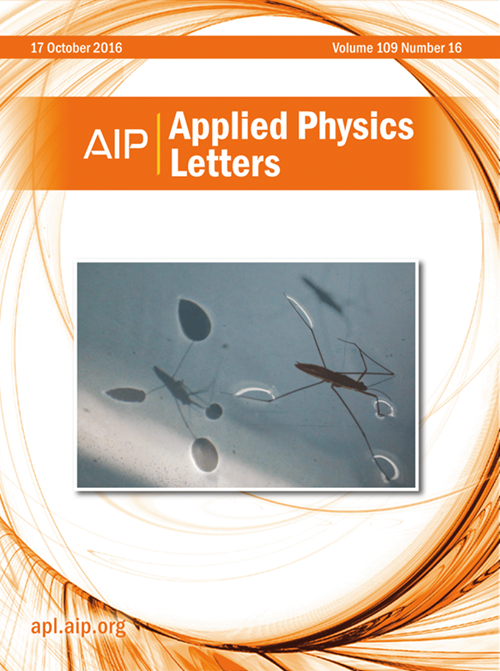All-dielectric quasi-BIC metasurface with strong coupling control by adjusting the loss—potential for vibrational strong coupling
IF 3.5
2区 物理与天体物理
Q2 PHYSICS, APPLIED
引用次数: 0
Abstract
Vibrational strong coupling (VSC) has promising applications in chemical reactions, molecular spectroscopy, and biochemical sensing. VSC can be achieved using plasma nanostructures. However, effective coupling between plasma nanostructures and molecules is often hindered by the metal materials used. Dielectric metasurfaces offer significant advantages and can effectively excite VSC, but the implementation of VSC through dielectric metasurfaces has not been widely investigated. Here, a mid-infrared all-dielectric metasurface to realize strong coupling control driven by quasi-bound states in the continuum (QBIC) is proposed. By coupling with polymethyl methacrylate (PMMA) molecules, a significant spectral splitting occurred. A 50-nm-thick PMMA layer increases the molecular signal amplification factor to 91%. Adjusting structural asymmetry parameters and utilizing the high Q factor of the QBIC mode allows flexible modulation of the coupling state. A strong coupling phenomenon is also observed with an oscillator absorption strength (Δε) 0.02 and a 5 nm PMMA thickness. Refractive index sensing analysis indicates a sensitivity of 2118 nm RIU−1, with a maximum figure of merit of 4089 RIU−1. This study highlights the potential of vibrational strong coupling for advancing biochemical sensing and polaritonic chemistry applications.通过调节振动强耦合损失势实现强耦合控制的全介质准bic超表面
振动强耦合(VSC)在化学反应、分子光谱和生化传感等领域有着广阔的应用前景。VSC可以通过等离子体纳米结构实现。然而,等离子体纳米结构与分子之间的有效耦合往往受到金属材料的阻碍。介质超表面具有显著的优势,可以有效地激发VSC,但通过介质超表面实现VSC尚未得到广泛的研究。本文提出了一种中红外全介质超表面,实现了连续介质准束缚态驱动下的强耦合控制。通过与聚甲基丙烯酸甲酯(PMMA)分子偶联,发生了显著的光谱分裂。50nm厚的PMMA层将分子信号放大系数提高到91%。调整结构不对称参数和利用QBIC模式的高Q因子,可以灵活地调制耦合状态。振荡器吸收强度(Δε)为0.02,PMMA厚度为5 nm时,也观察到强耦合现象。折射率传感分析表明灵敏度为2118 nm RIU−1,最大优值为4089 RIU−1。这项研究强调了振动强耦合在推进生化传感和极化化学应用方面的潜力。
本文章由计算机程序翻译,如有差异,请以英文原文为准。
求助全文
约1分钟内获得全文
求助全文
来源期刊

Applied Physics Letters
物理-物理:应用
CiteScore
6.40
自引率
10.00%
发文量
1821
审稿时长
1.6 months
期刊介绍:
Applied Physics Letters (APL) features concise, up-to-date reports on significant new findings in applied physics. Emphasizing rapid dissemination of key data and new physical insights, APL offers prompt publication of new experimental and theoretical papers reporting applications of physics phenomena to all branches of science, engineering, and modern technology.
In addition to regular articles, the journal also publishes invited Fast Track, Perspectives, and in-depth Editorials which report on cutting-edge areas in applied physics.
APL Perspectives are forward-looking invited letters which highlight recent developments or discoveries. Emphasis is placed on very recent developments, potentially disruptive technologies, open questions and possible solutions. They also include a mini-roadmap detailing where the community should direct efforts in order for the phenomena to be viable for application and the challenges associated with meeting that performance threshold. Perspectives are characterized by personal viewpoints and opinions of recognized experts in the field.
Fast Track articles are invited original research articles that report results that are particularly novel and important or provide a significant advancement in an emerging field. Because of the urgency and scientific importance of the work, the peer review process is accelerated. If, during the review process, it becomes apparent that the paper does not meet the Fast Track criterion, it is returned to a normal track.
 求助内容:
求助内容: 应助结果提醒方式:
应助结果提醒方式:


